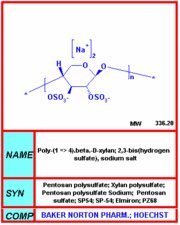Clinical Quiz questions are based on selected articles in this issue. Answers appear in this issue.
American Family Physician has been approved by the American Academy of Family Physicians as having educational content acceptable for Prescribed credit hours. Term of approval covers issues published within one year from the beginning distribution date of October 2001. This issue has been approved for up to 3 Prescribed credit hours. Credit may be claimed for one year from the date of this issue.
The American Academy of Family Physicians is accredited by the Accreditation Council for Continuing Medical Education to provide continuing medical education for physicians.
The AAFP designates this educational activity for a maximum of 3 hours in Category 1 credit toward the American Medical Association Physician's Recognition Award. Each physician should claim only those hours of credit that he or she actually spent in the educational activity.
AAFP Credit
Each copy of AFP contains a Clinical Quiz answer card. AAFP members may use this card to obtain the designated number of Prescribed credit hours for the year in which the card is postmarked.
AMA/PRA Category 1 Credit
AAFP members who satisfy the Academy's continuing medical education requirements are automatically eligible for the AMA/PRA.
Physicians who are not members of the AAFP are eligible to receive the designated number of credit hours in Category 1 of the AMA/PRA on completion and return of the Clinical Quiz answer card. AFP keeps a record of AMA/PRA Category 1 credit hours for nonmember physicians. This record will be provided on request; however, nonmembers are responsible for reporting their own Category 1 CME credits when applying for the AMA/PRA or other certificates or credentials.
For health care professionals who are not physicians and are AFP subscribers, a record of CME credit is kept by AAFP and will be provided to you on written request. You are responsible for reporting CME hours to your professional organization.
NOTE: The full text of AFP is available online (http://www.aafp.org/afp), including each issue's Clinical Quiz. The table of contents for each online issue will link you to the Clinical Quiz. Just follow the online directions to take the quiz and, if you're an AAFP member, you can submit your answers for CME credit.
Instructions
Read each article, answer all questions on the quiz pages and transfer your answers to the Clinical Quiz answer card (bound into your copy of AFP). This will help you avoid errors and permit you to check your answers against the correct answers.
Mail the Clinical Quiz answer card within one year (by October 31, 2002). The bar code on the answer card contains your identification for CME credit hours.
Before beginning the test, please note:
Each Clinical Quiz includes two types of questions: Type A and Type X.
Type A questions have only one correct answer and may have four or five choices. Here is a typical Type A question:
CME Quality Survey
Please answer the following questions to help us monitor the quality of AFP's CME material on an ongoing basis. Mark your answers on this issue's quiz card. We would appreciate hearing any suggestions you have for improving the CME experience offered through AFP. See the directory on page 1119.
COPYRIGHT 2001 American Academy of Family Physicians
COPYRIGHT 2001 Gale Group



